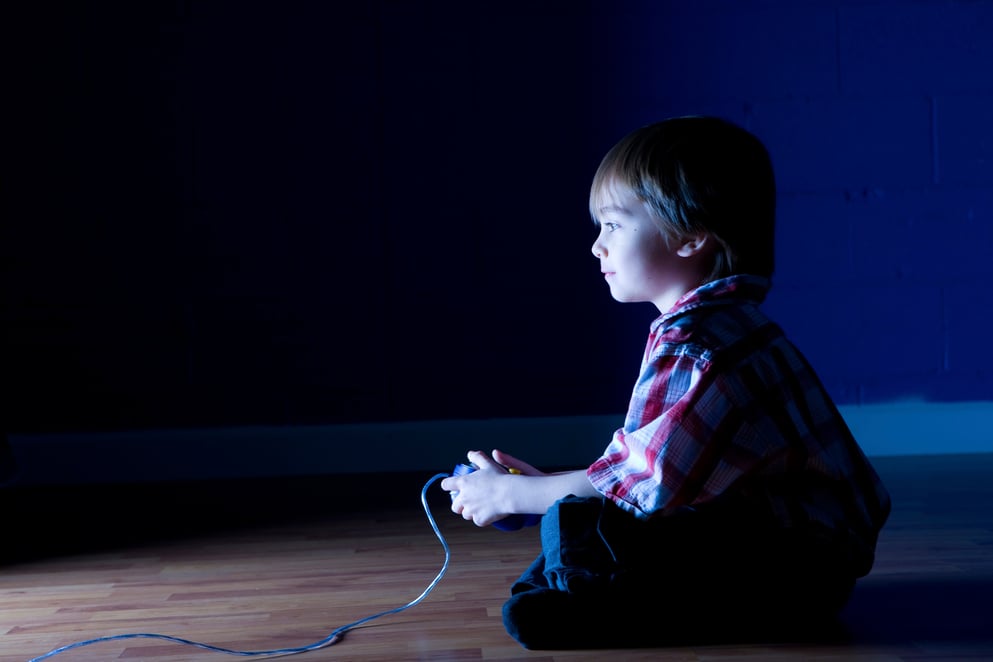THE VALUE OF GAME-BASED LEARNING IN EDUCATION
May 26, 2015 admin Technology, Child Development, gaming,
 Most kids love video games, but there continues to be debate on whether or not they have a place in the classroom. Is game-based learning a valuable educational tool, or does it merely indulges kids’ desire for play in hopes that they’ll sit still long enough to learn something? At GEMS World Academy-Chicago, we’ve experimented with game-based learning and have seen firsthand the many positive effects.
Most kids love video games, but there continues to be debate on whether or not they have a place in the classroom. Is game-based learning a valuable educational tool, or does it merely indulges kids’ desire for play in hopes that they’ll sit still long enough to learn something? At GEMS World Academy-Chicago, we’ve experimented with game-based learning and have seen firsthand the many positive effects.
Certainly, the element of play is effective in engaging children, as has been demonstrated since the beginning of time with interactive storytelling. And research is showing that this interactive element--inherent in game-based learning—is a far more effective strategy than the more traditional instruction modes such as educational TV programming and MOOCs (Massive Open Online Courses).
The main advantage with effective game-based learning—included in such programs as Minecraft, which has/have been approved for use at GEMS World Academy-Chicago at all levels—is that the focus is experiential. It encourages creative problem-solving methods, rather than simple memorization of facts and rules.
For one thing, good educational games provide both a motivation to learn and a context in which that knowledge is recognized by the student to be useful. In an interview for Games + Learning, game-based learning expert Jordan Shapiro, who studies the approach globally, observed, “… since games are essentially simulations it’s possible for us to have this information immediately contextualized. If I need to understand 6th Century Japanese history to win the game, suddenly that makes sense and now I am motivated to learn.”
But even with the inherent benefits, isn’t there still an element of indulging in kids’ desire to play in order to teach them the lessons we hope they learn? Perhaps, but Shapiro suggests that parents and educators alike should take a tongue-in-cheek look at the big picture. “I think all of education, to some extent, is tricking kids into having immediate context so it matters to them so they can learn the things we know will have context for them when they are adults,” he said.
So—whether you agree with Shapiro’s assessment of education or not—how does the idea of contextualizing content to facilitate learning work? New Media Institute expert and Carnegie Mellon University Entertainment Technology Center edutainment director Jessica Trybus expands on this concept in a New Media Institute article. “Within an effective game-based learning environment, we work toward a goal, choosing actions and experiencing the consequences of those actions along the way,” she wrote. “We make mistakes in a risk-free setting, and through experimentation, we actively learn and practice the right way to do things. This keeps us highly engaged in practicing behaviors and thought processes that we can easily transfer from the simulated environment to real life.
“In contrast, traditional, passive training approaches drill us on certain narrow procedures, and then evaluate us on our memory of what we were told. Even when we successfully retain the lesson’s facts and procedures, our behavior in true-to-life situations remains untested. In addition, even the most comprehensive training program cannot cover procedures for every complex eventuality that we will encounter—no matter how thick the binder is. In game-based environments, we learn not only the facts, but also the important, underlying hows and whys. This understanding of deeper, more abstract principles prepares us to perform consistently and effectively, even in new and unexpected situations.”
The success of this inquiry-based approach is highlighted in the experiences of Joel Levin, the co-founder of Teacher Gaming, a company that began adapting Minecraft for educational use and has also since developed a new math and science-focused game, Kerbal. A profile in The Atlantic explores how Levin, while working as an elementary school tech teacher, began developing code to make his own age-appropriate version of Minecraft. He discovered that not only did students ace the hard skills he was attempting to teach, but that they were also engaged in unprompted conversations about the responsibilities of digital citizenship.
That same story for The Atlantic also highlights the way that game-based learning prepares students to learn the flexibility and adaptability of knowledge. California computer science teacher Diana Main observed of the first class in which she incorporated game-based learning rather than the traditional memorization and application of rules and assignments, “When you have opportunities for creativity and more open-ended situations, it allows kids to figure out that they can try things, they can do things differently—there’s not one formulaic way to do well in this class. A student told me after the class that he learned that first option [to solving a problem] isn’t always the best option. And that’s something you can’t teach kids—they need to have the opportunity to experience it themselves.”
It’s this process of guided self-discovery that teaches students the skills they need to prepare them to become the visionaries and problem-solvers of their generation. And if that process is engaging, rewarding, and—dare we say it—fun, it can also lead to a lifelong passion for learning.